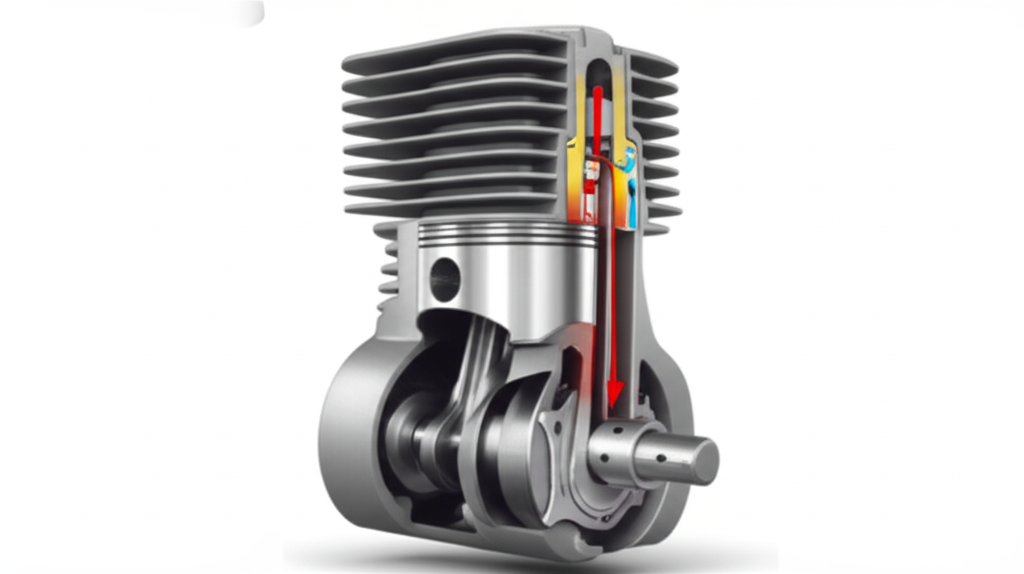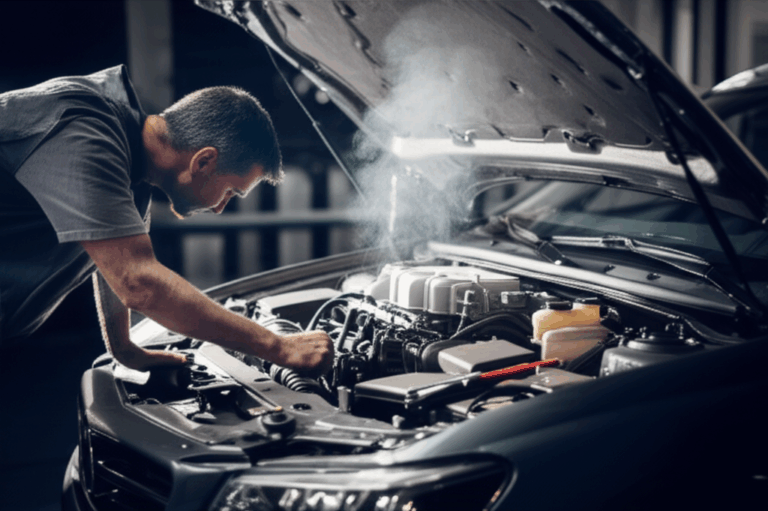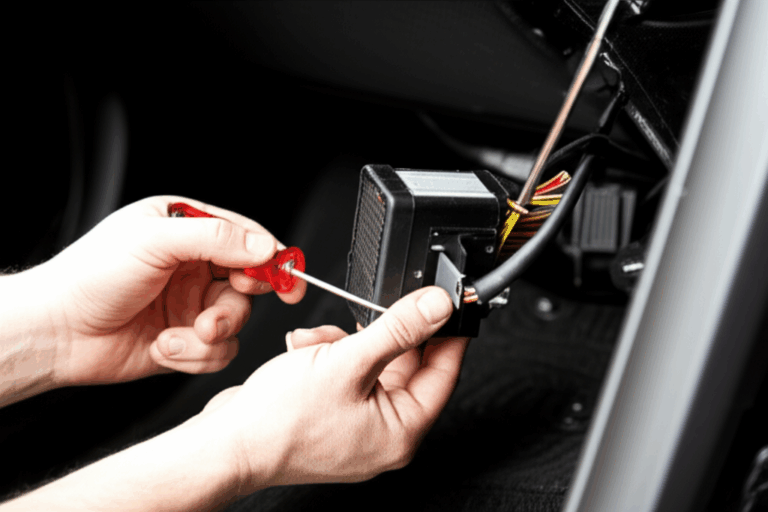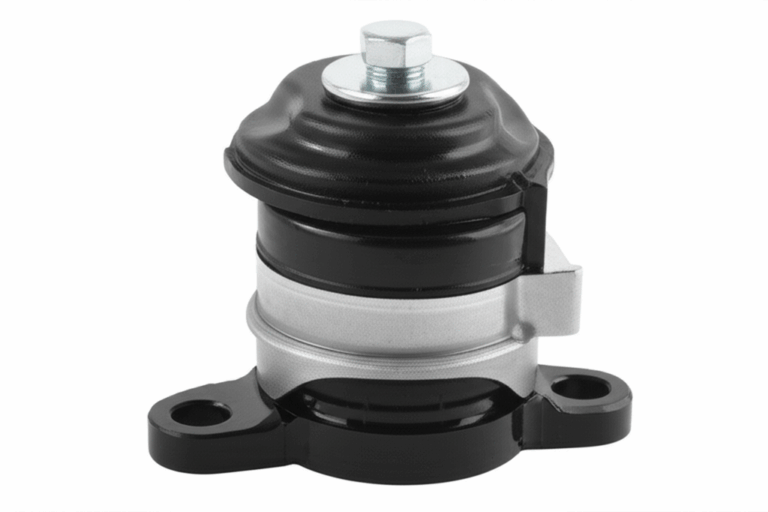
How Does a 2‑Stroke Motor Work? Unpacking the Two‑Cycle Engine
Table of contents
- What I Mean by a “2‑Stroke Motor”
- The Essential Parts I Look At First
- Cylinder, piston, and piston rings
- Crankshaft, connecting rod, and bearings
- Crankcase compression and ports
- Spark plug and ignition system
- Carburetor, air filter, and fuel tank
- Cooling: air vs liquid
- Exhaust, muffler, and expansion chamber
- The Two Strokes, Step by Step
- Stroke 1: Upward movement (compression and crankcase intake)
- Stroke 2: Downward movement (power, exhaust, and transfer)
- Scavenging basics and gas flow dynamics
- Port timing and crankshaft rotation degrees
- How a 2‑Stroke Differs From a 4‑Stroke
- Advantages I Love About 2‑Strokes
- Disadvantages You Should Know
- Where 2‑Strokes Shine in the Real World
- Reed Valve vs Rotary Valve vs Piston‑Ported
- Lubrication: Pre‑Mix vs Oil Injection
- Tuning and Resonance: Why Pipes Matter So Much
- Practical Maintenance Tips and Troubleshooting
- Modern Innovations: Cleaner, Smarter 2‑Strokes
- Environmental Impact and Regulations
- Quick Answers to Big Questions
- Final Thoughts: Why 2‑Strokes Still Have a Loyal Following
What I Mean by a “2‑Stroke Motor”
When I say two‑stroke motor I’m talking about a type of internal combustion engine that completes a power cycle in two piston strokes. The piston moves up once and down once per cycle. That’s it. The crankshaft gets a power stroke every single revolution which is a big reason these little beasts punch above their weight.
I first learned this on a chainsaw that refused to start. I tore it down on a workbench I had no business using. That’s when the lightbulb clicked. No camshaft. No valves like a 4‑stroke. Just smart port shapes in the cylinder and a crankcase that does double duty as a pump. Two strokes. One power hit each time the crank spins. Simple but clever.
You’ll find two‑stroke engines in chainsaws, leaf blowers, string trimmers, dirt bikes, scooters, outboard motors, snowmobiles, go‑karts, and even model airplanes. Anywhere weight and size matter a lot you’ll see them in the lineup.
The Essential Parts I Look At First
Cylinder, piston, and piston rings
The cylinder is the combustion chamber’s home. The piston rides up and down inside it. On top sits the cylinder head which closes the chamber and holds the spark plug. The piston crown is the top surface that faces the combustion and the piston skirt guides the piston sides in the bore.
Piston rings seal the gap between the piston and the cylinder wall. They keep compression high and they scrape and spread oil film. If the rings wear you lose compression and the engine feels weak or won’t start. I always do a quick compression check when troubleshooting.
The gudgeon pin or piston pin connects the piston to the connecting rod. It lives a hard life and needs proper lubrication.
Crankshaft, connecting rod, and bearings
The connecting rod links the piston to the crankshaft which converts the piston’s reciprocating motion into rotary motion. The crankshaft rides on bearings to reduce friction and to survive the high RPM many two‑strokes love to spin. Flywheel weight on one end smooths out power pulses and helps start the engine. It also often houses magnets for the ignition system.
Crankcase compression and ports
Here’s the clever part. The crankcase is sealed and acts like a pump. As the piston moves up it creates a vacuum in the crankcase which pulls in a fresh air‑fuel mixture from the carburetor through the intake port. As the piston moves down it pressurizes the crankcase which pushes that fresh charge up through transfer ports into the cylinder.
Unlike a typical 4‑stroke with intake and exhaust valves a classic two‑stroke uses ports cut into the cylinder wall:
- Intake port: admits the fresh charge into the crankcase. Often controlled by a reed valve or a rotary valve.
- Transfer ports: move the compressed charge from the crankcase into the cylinder.
- Exhaust port: lets burned gases escape when the piston uncovers it.
Spark plug and ignition system
The spark plug ignites the compressed mixture at just the right time. Small engines use a magneto which makes spark without a battery. Others use a generator and an ignition coil. The ignition system includes the magneto or stator and a flywheel with magnets that induce current as it spins.
On many bikes and outboards there’s a laminated stator core with coils and a matching rotor. Those laminations matter because they cut eddy current losses and improve efficiency. If you want to geek out here are a few good reads:
- A primer on stator core lamination
- The companion role of a rotor core lamination
- What goes into quality electrical steel laminations
- How manufacturers think about motor core laminations
Carburetor, air filter, and fuel tank
Most traditional 2‑strokes use a carburetor to mix fuel and air. It meters fuel through jets and needles. A dirty air filter can throw the mixture off and cause rich or lean running. The fuel tank feeds the carb through a line and a little screen or in‑tank filter.
Direct injection exists on modern designs. I’ll get to that in a moment.
Cooling: air vs liquid
Small engines often use air cooling with cooling fins molded into the cylinder and head. Bigger or high performance engines like many outboards and some motorcycles use liquid cooling with a water pump and radiator or a raw‑water system in marine setups. Cool engines live longer and they tolerate tighter tolerances.
Exhaust, muffler, and expansion chamber
Two‑strokes respond to exhaust shape like a singer responds to the shape of a room. A simple muffler just quiets things down. An expansion chamber does more. It uses resonance in the exhaust to push unburned mixture back into the cylinder right before the port closes. When you hit the sweet spot the engine wakes up fast.
The Two Strokes, Step by Step
Stroke 1: Upward movement (compression and crankcase intake)
As the piston rises toward Top Dead Center it compresses the air‑fuel mixture that’s already in the cylinder. At the same time the volume in the crankcase grows which pulls fresh mixture from the carburetor through the intake port. If the engine uses reed valves those reeds open under vacuum and snap shut when pressure reverses. If it uses a rotary valve a timed opening on the crank controls the flow.
At the top of the stroke the spark plug fires. Timing matters a lot because the flame needs a moment to develop pressure.
Stroke 2: Downward movement (power, exhaust, and transfer)
Combustion pushes the piston down hard. That is the power stroke. As the piston moves down it compresses the mixture in the crankcase and it eventually uncovers the exhaust port. Hot exhaust rushes out. A beat later the piston uncovers the transfer ports. The compressed fresh charge blasts upward and across the cylinder. The fresh charge pushes out the remaining exhaust and fills the cylinder for the next cycle.
Two strokes in total. Up for compression and crankcase intake. Down for power, exhaust, and transfer. One revolution of the crank per power hit. That is the two stroke principle in one breath.
Scavenging basics and gas flow dynamics
The motion of gases during that exhaust and transfer phase is called scavenging. Good scavenging clears burned gases and keeps fresh fuel from escaping straight out the exhaust. Designers shape transfer ports to aim the fresh charge up and over in a loop so it sweeps the chamber and turns back down. That loop scavenge pattern helps.
Many cylinders add boost ports or additional transfer passages to improve that loop. Port angles create a swirl that keeps the fresh charge away from the open exhaust port as long as possible. Gas flow dynamics looks complicated on paper yet the goal feels simple in practice. Keep the fresh mix in and get the spent stuff out.
Port timing and crankshaft rotation degrees
Port timing is the schedule of when each port opens and closes as measured in crankshaft rotation degrees. For example the exhaust port usually opens first. That creates a blowdown period where pressure drops before transfer begins. Transfer ports then open and do their sweep. Intake timing into the crankcase depends on whether the engine uses a reed valve, a rotary valve, or pure piston‑port control.
Tuning folks tweak port timing by changing port heights and widths or by adjusting base gasket thickness. I have moved a cylinder by a hair and it changed the powerband from sleepy to lively. Tiny changes in degrees can move the hit up or down the RPM range.
How a 2‑Stroke Differs From a 4‑Stroke
- Cycles: A 2‑stroke finishes a power cycle in two piston movements. A 4‑stroke needs four. That means a 2‑stroke fires every revolution which boosts power for a given size.
- Valves vs ports: Most 2‑strokes are valveless in the poppet‑valve sense. They use intake, transfer, and exhaust ports in the cylinder wall. Some use reed or rotary valves that act as one‑way or timed doors on the intake only.
- Lubrication: A classic 2‑stroke uses pre‑mix fuel or an oil injection system that meters oil into the intake. There is no separate oil sump. Oil burns and exits with exhaust.
- Efficiency and emissions: Traditional carbureted designs lose some fresh charge during scavenging which hurts fuel economy and increases unburned hydrocarbons. Modern direct injection fixes a lot of that.
- Complexity and mass: A 2‑stroke has fewer moving parts and often weighs less for a given output. That is why power‑to‑weight ratio is such a bragging point.
Advantages I Love About 2‑Strokes
- Simplicity: Fewer parts and a simple two stroke cycle make them straightforward to understand and service in the field.
- Power‑to‑weight ratio: One power stroke per crankshaft revolution gives strong punch relative to displacement. This is why a 125cc 2‑stroke dirt bike can hang with a bigger 4‑stroke on peak power.
- Cost: Fewer parts usually means lower manufacturing cost.
- Any‑angle operation: Because there is no oil sump a chainsaw or leaf blower can run at odd angles without starving for oil.
- High RPM potential: Light pistons and simple timing let some engines spin fast and make exciting top‑end power.
Disadvantages You Should Know
- Emissions: Carbureted two‑strokes can lose a noticeable chunk of fresh mixture out the exhaust during scavenging. That bumps hydrocarbon and CO emissions.
- Fuel consumption: That same loss often means worse fuel economy.
- Lubrication limits: Oil goes through the engine once and burns. Total loss lubrication can mean more wear on bearings and the piston skirt at high loads.
- Durability: High performance setups run hot and can wear quicker. Tight pistons and thin rings help power yet they need careful warm‑up and quality lubrication.
- Noise: Two‑strokes often sound louder. The exhaust note sings at higher frequency and the pipe design matters a lot for noise.
Where 2‑Strokes Shine in the Real World
I have used or tuned two‑strokes in:
- Chainsaws and forestry tools from Stihl and Husqvarna
- Leaf blowers and string trimmers from Echo and others
- Dirt bikes from KTM and Husqvarna with that classic ring‑ding sound
- Scooters in dense cities
- Outboard motors from Yamaha, Suzuki Marine, and older Mercury units
- Snowmobiles and go‑karts where power‑to‑weight pays off
- Model aircraft engines and RC vehicles where every gram matters
Marine engines had a long two‑stroke history. Many new outboards now use 4‑strokes to meet regulations yet direct‑injection 2‑strokes carved out a niche. I have spent days on lakes where an Evinrude E‑TEC or a Mercury OptiMax impressed me with clean idle and strong thrust.
Reed Valve vs Rotary Valve vs Piston‑Ported
I have run all three. Each has a distinct feel.
- Reed valve operation: One‑way petals sit behind the intake port. Crankcase vacuum pulls them open to admit the air‑fuel mixture. When pressure rises the reeds snap shut. Reeds help low‑RPM torque since they self time with flow. A cracked reed petal will make starting hard and throttle response mushy. I learned that the hard way on a trail day.
- Rotary valve operation: A disc on the crankshaft has a cutout that opens and closes the intake port as the crank turns. Rotary valve engines can run aggressive intake timing for power since the disc gives precise control. Many classic performance engines used this layout.
- Piston‑ported engine: The piston skirt itself covers and uncovers the intake port. This valveless engine design is simple and light. It tends to sacrifice a bit of low end response compared with reeds or rotary unless tuned carefully.
Lubrication: Pre‑Mix vs Oil Injection
Two‑stroke lubrication methods come in two main flavors:
- Pre‑mix fuel: You mix oil into the gasoline. Ratios like 40:1 or 50:1 are common for consumer tools. High performance or break‑in may need richer oils like 32:1. Always follow the engine maker’s spec. I mark my fuel cans to avoid mistakes.
- Oil injection system: A small pump meters oil into the intake based on throttle and RPM. This saves you from mixing at the pump and it can reduce smoke at idle since oil flow drops when the load is light.
Either way oil is consumed and exits with the exhaust. That is why old two‑strokes smoke and smell like a race paddock. Modern oils burn cleaner yet the effect remains.
Tuning and Resonance: Why Pipes Matter So Much
If you ever bolted on an expansion chamber you know the feeling. Suddenly the midrange hits harder and the engine revs out like it found extra lungs. That is resonance in the exhaust at work.
Here is the short version. During scavenging some fresh mixture sneaks toward the exhaust. A properly shaped expansion chamber sends a reflected pressure wave back toward the cylinder. That wave arrives just before the exhaust port closes and it nudges the fresh mixture back into the cylinder. You get better cylinder filling without changing displacement. This is why exhaust port timing and the pipe need to play nice together.
Variable exhaust port systems exist on some engines. They change port height or exhaust area with RPM to move the powerband around. Yamaha and others have used variations of this on production bikes. It makes a wide spread of power instead of a narrow hit.
Practical Maintenance Tips and Troubleshooting
Two‑stroke engine troubleshooting starts with the basics. I use this simple checklist.
- Fuel, spark, compression: Verify fresh pre‑mix and correct ratio. Check the spark plug for spark and fouling. Measure compression or at least feel for a strong pull.
- Carburetor function: Clean jets and passages. Make sure the choke works and that float height sits in spec if it has a bowl. Tiny passage clogs cause bogs or no starts.
- Air filter: A clogged filter makes the engine run rich and lazy. Clean or replace it often.
- Reed valves: If equipped inspect for chips or gaps. Replace if you see light around the petal edges.
- Exhaust blockage: A mouse nest or a plugged muffler kills power. I once chased a bog for an hour before I tapped the pipe and heard the rattle.
- Cooling system: Keep fins clean on air‑cooled engines. On liquid‑cooled engines check coolant level and that the water pump spins and seals.
- Oil injection: Bleed air from lines after service and confirm flow. I prefer to run a touch of oil in the first tank after injector work as a safety margin.
- Piston and rings: If power falls off or starting gets hard check ring end gap and piston skirt wear. Scoring on the piston crown or cylinder walls points to lean running or poor lubrication.
A note on fuel economy. Classic carbureted 2‑strokes can lose fresh charge out the exhaust during scavenging. Some estimates peg that loss in the double digits. You feel it at the pump. You also smell it in the exhaust. Modern systems reduce that loss with timing and fuel placement.
Modern Innovations: Cleaner, Smarter 2‑Strokes
Two‑strokes did not stop evolving. Direct injection 2‑stroke systems like those from Orbital engine technology changed the game. Instead of sending fuel through the crankcase those systems inject fuel directly into the cylinder after the ports close or near closing. Air still moves through transfer ports yet the fuel shows up late which slashes unburned hydrocarbons. Oil injection rates also get smarter which cuts smoke.
Evinrude E‑TEC and Mercury OptiMax are well known examples in marine engines. They delivered strong torque, quick starts, and cleaner exhaust compared with old carbureted two‑strokes. Many models earned strict emissions ratings that let them run in regulated waters. Similar ideas show up in snowmobiles and other powersports where two‑stroke character still matters.
Some modern small engines also pair stratified scavenging or advanced reed systems with better combustion chambers to improve efficiency without full DI. The result feels familiar yet cleaner.
Environmental Impact and Regulations
Emissions regulations pushed many segments toward 4‑stroke engines or battery power. Two‑strokes historically produced higher hydrocarbons and carbon monoxide due to short‑circuiting of fresh mixture. Noise rules also tightened. Marine outboards saw this shift first in many markets. Handheld tools still use two‑strokes for power‑to‑weight but many consumer products moved to 4‑strokes or electric.
Direct‑injection two‑strokes thread the needle. They keep the power‑to‑weight advantage and meet strict rules in many regions. They use less fuel than old carb versions and they smoke less too.
Quick Answers to Big Questions
- Why are 2‑strokes powerful for their size? They deliver a power stroke every crankshaft revolution. They have fewer moving parts which cuts parasitic losses. They also rev high which moves more air for a given displacement.
- Why are 2‑strokes “dirty”? Traditional designs let some fuel‑air mix slip into the exhaust during scavenging. Oil burns with the fuel since lubrication is a total loss system. Both raise emissions. Modern DI reduces this a lot.
- What is crankcase compression? The sealed crankcase acts like a pump. The piston moving up draws mixture in. The piston moving down compresses it which pushes the charge through transfer ports.
- What is port timing? It is the schedule of when intake, transfer, and exhaust ports open and close expressed in crankshaft rotation degrees. Builders adjust port heights or gaskets to move timing which shifts the powerband.
- Do two‑strokes have valves? Not poppet valves like a 4‑stroke. Many use reed valves on the intake. Some use rotary valves. Some are piston‑ported and rely on the piston skirt to open or close the port.
- What about cooling? Air‑cooled engines use cooling fins. Liquid‑cooled engines use a water pump and a radiator or raw‑water cooling in marine setups. Keep them clean and full.
Final Thoughts: Why 2‑Strokes Still Have a Loyal Following
I fell for two‑strokes because they pack a lot of punch into a small, simple package. You feel that snap in a dirt bike when the pipe comes on the boil. You feel that eager throttle in a chainsaw when the chain bites wood. You also learn a little humility when a tiny air leak or a clogged jet makes an engine sulk. They teach you to listen.
If you understand the two strokes you can troubleshoot almost anything on them. Watch the piston rise and picture compression in the cylinder as the crankcase fills. Watch it fall and imagine exhaust rushing out followed by the transfer blast that sweeps the chamber. That mental movie will guide you through port timing choices, carb settings, expansion chamber swaps, and even oil ratio debates.
Two‑strokes earned their place because they are light, simple, and strong for their size. Modern versions show that cleaner and smarter can sit alongside that classic character. Whether you tinker on a leaf blower, rip on a 125, or push a skiff with a modest outboard you are part of a long, smoky, grinning tradition.








